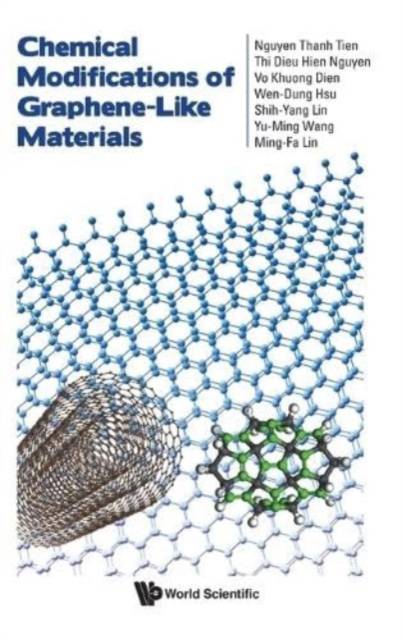
- Afhalen na 1 uur in een winkel met voorraad
- Gratis thuislevering in België vanaf € 30
- Ruim aanbod met 7 miljoen producten
- Afhalen na 1 uur in een winkel met voorraad
- Gratis thuislevering in België vanaf € 30
- Ruim aanbod met 7 miljoen producten
Zoeken
Chemical Modifications of Graphene-Like Materials
Nguyen Thanh Tien, Thi Dieu Hien Nguyen, Vo Khuong Dien, Wen-Dung Hsu, Shih-Yang Lin, Yu-Ming Wang, Ming-Fa Lin
Hardcover | Engels
€ 286,95
+ 573 punten
Omschrijving
Graphene-like materials have attracted considerable interest in the fields of condensed-matter physics, chemistry, and materials science due to their interesting properties as well as the promise of a broad range of applications in energy storage, electronic, optoelectronic, and photonic devices.The contents present the diverse phenomena under development in the grand quasiparticle framework through the first-principles calculations. The critical mechanisms, the orbital hybridizations and spin configurations of graphene-like materials through the chemical adsorptions, intercalations, substitutions, decorations, and heterojunctions, are taken into account. Specifically, the hydrogen-, oxygen-, transition-metal- and rare-earth-dependent compounds are thoroughly explored for the unusual spin distributions. The developed theoretical framework yields concise physical, chemical, and material pictures. The delicate evaluations are thoroughly conducted on the optimal lattices, the atom- and spin-dominated energy bands, the orbital-dependent sub-envelope functions, the spatial charge distributions, the atom- orbital- and spin-projected density of states, the spin densities, the magnetic moments, and the rich optical excitations. All consistent quantities are successfully identified by the multi-orbital hybridizations in various chemical bonds and guest- and host-induced spin configurations.The scope of the book is sufficiently broad and deep in terms of the geometric, electronic, magnetic, and optical properties of 3D, 2D, 1D, and 0D graphene-like materials with different kinds of chemical modifications. How to evaluate and analyze the first-principles results is discussed in detail. The development of the theoretical framework, which can present the diversified physical, chemical, and material phenomena, is obviously illustrated for each unusual condensed-matter system. To achieve concise physical and chemical pictures, the direct and close combinations of the numerical simulations and the phenomenological models are made frequently available via thorough discussions. It provides an obvious strategy for the theoretical framework, very useful for science and engineering communities.
Specificaties
Betrokkenen
- Auteur(s):
- Uitgeverij:
Inhoud
- Aantal bladzijden:
- 604
- Taal:
- Engels
Eigenschappen
- Productcode (EAN):
- 9789811267932
- Verschijningsdatum:
- 22/01/2024
- Uitvoering:
- Hardcover
- Formaat:
- Genaaid
- Afmetingen:
- 152 mm x 229 mm
- Gewicht:
- 970 g

Alleen bij Standaard Boekhandel
+ 573 punten op je klantenkaart van Standaard Boekhandel
Beoordelingen
We publiceren alleen reviews die voldoen aan de voorwaarden voor reviews. Bekijk onze voorwaarden voor reviews.











